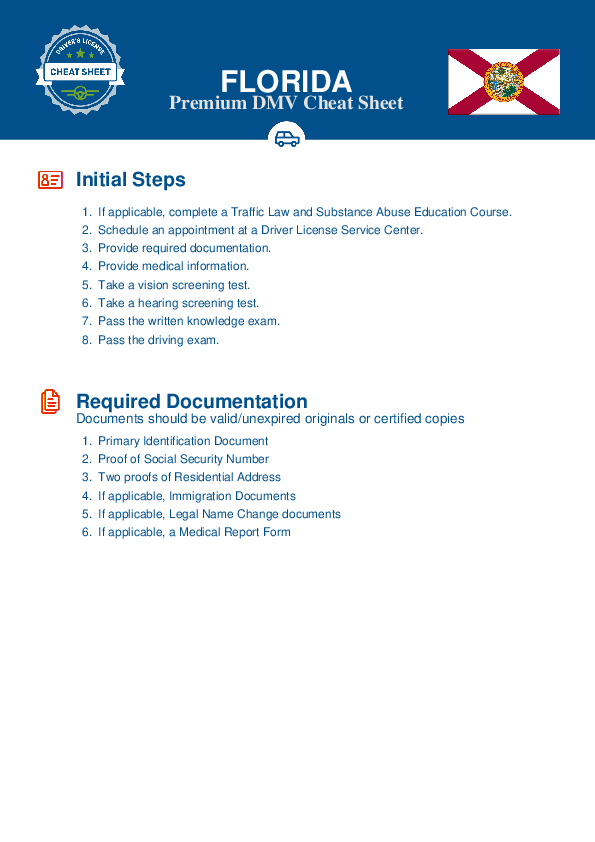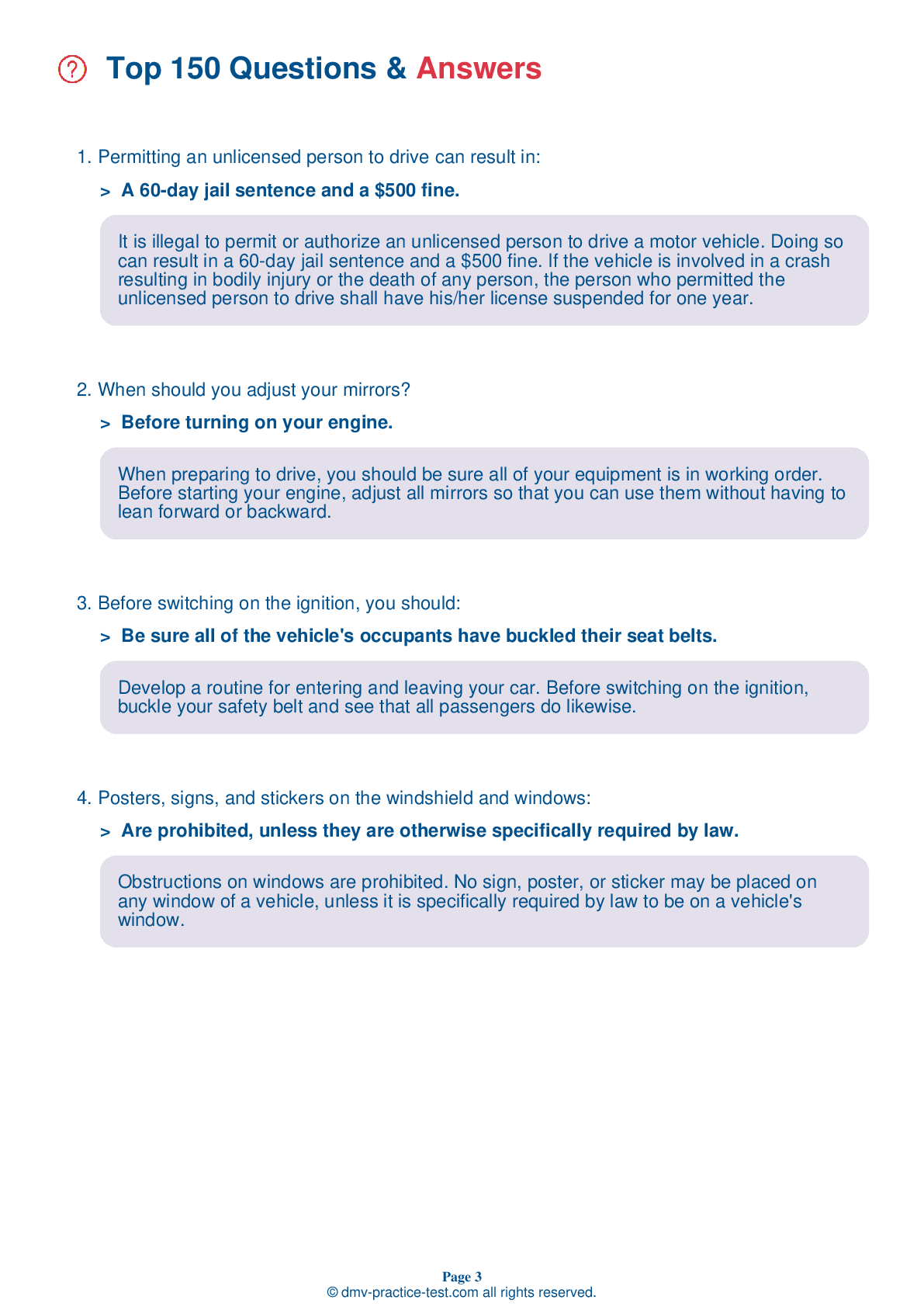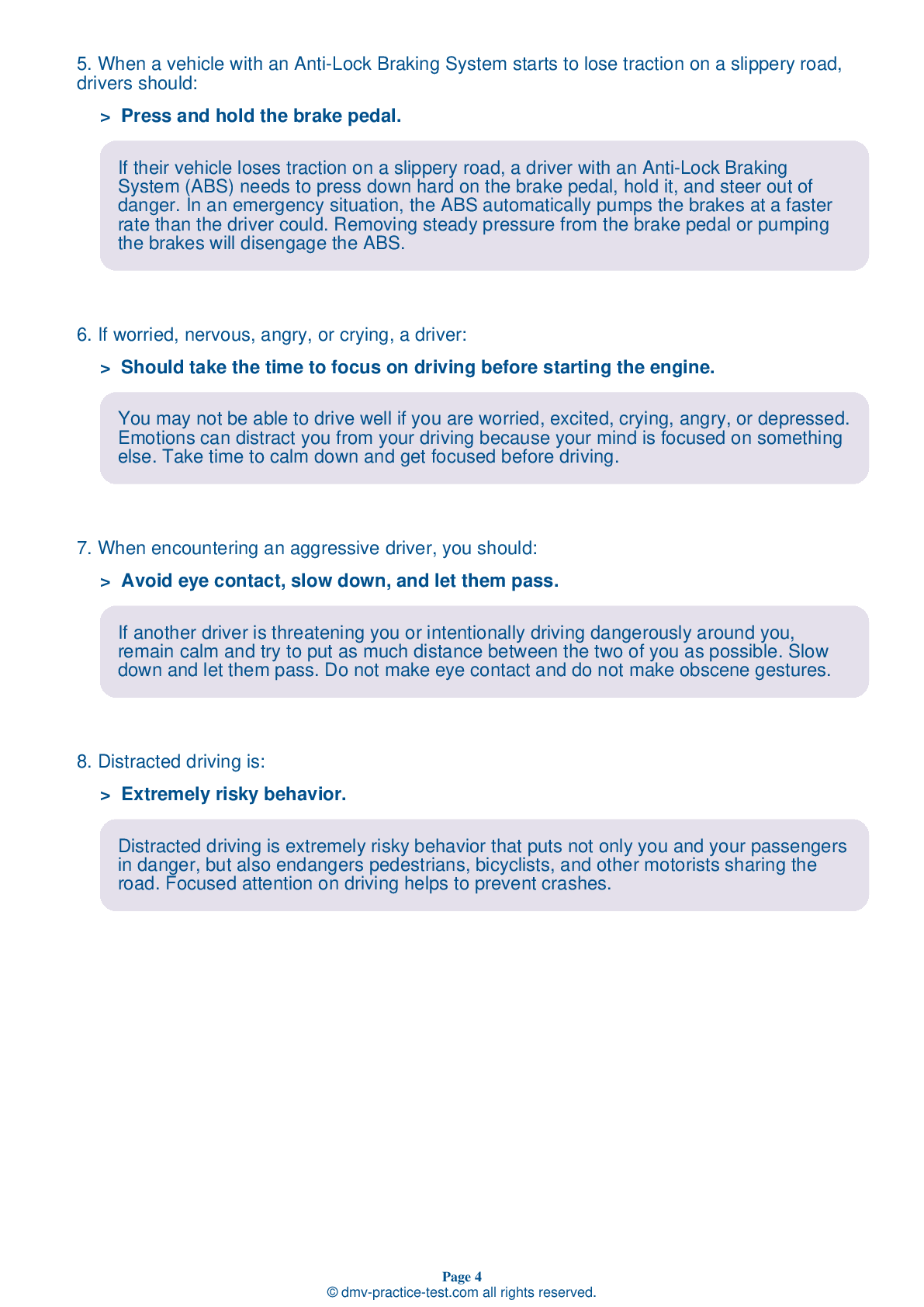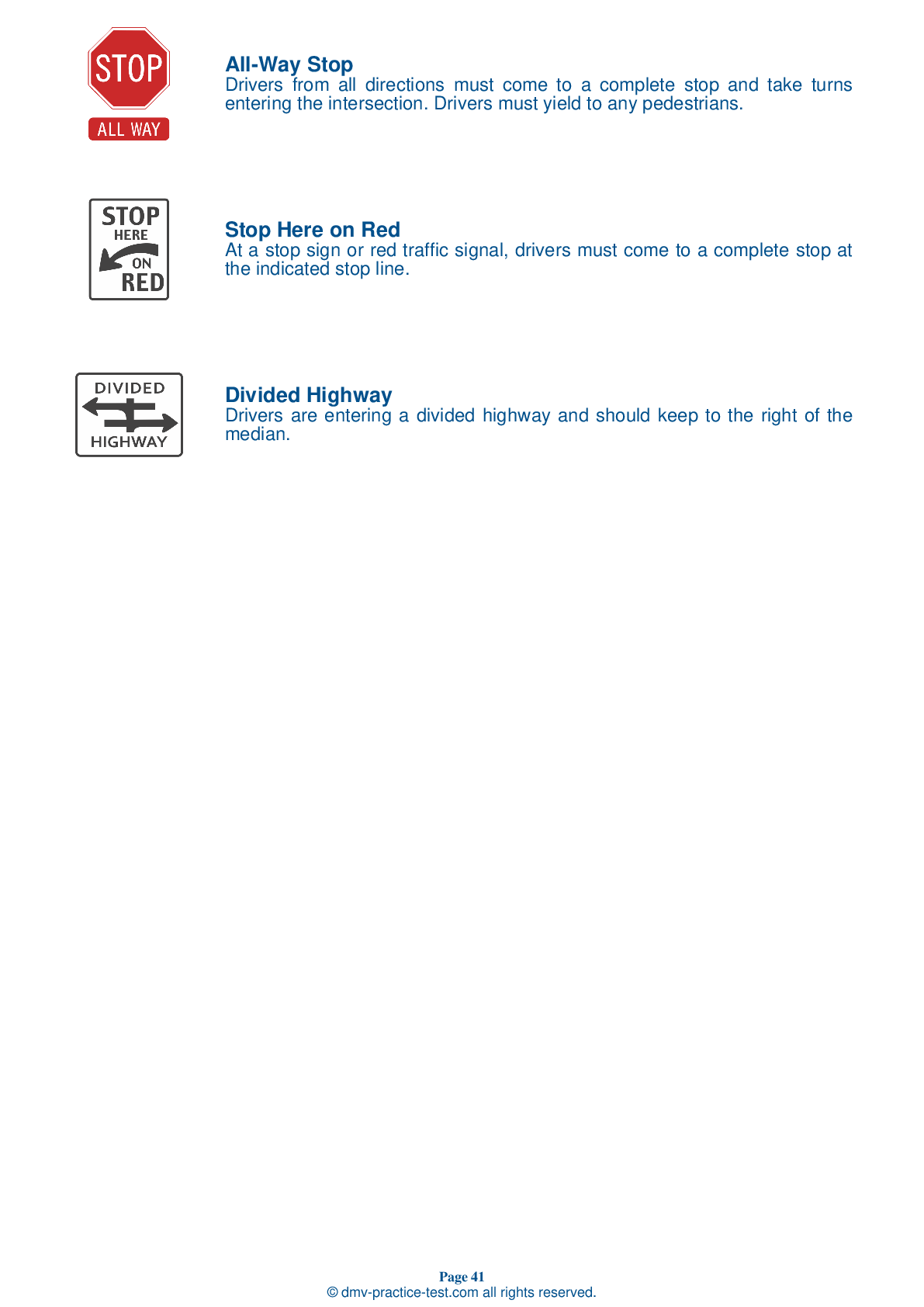FREE Florida DMV Practice Test #6 Page 4 of 7
This set of DMV practise tests for the Florida has been updated for January 2025. It includes questions based on the most important traffic signs and laws for 2025 from the Florida Driver Handbook. To study for the DMV driving permit test and driver's licence exam, use actual questions that are very similar (often identical!) to the DMV driving permit test and driver's licence exam.
Each question on the practise exam has a tip and explanation to help you recall the ideas. Questions about traffic rules, traffic signs, and driving statutes, as well as information from the Driver Handbook, will be included in the written portion of the official DMV test.
You must properly answer 40 of the 50 questions to receive the required passing mark. To help you prepare for your Florida instruction permit or driver's licence, take our DMV practise test.
The DMV exam is offered in a variety of languages.
Using any kind of testing assistance will result in an automatic fail, and the DMV may take additional action against your driver's licence, so stay away from it.
22 . When parking your vehicle downhill on a two-way street:
When you park on a downward-facing slope, turn your wheels sharply toward the side of the road. This way, if your vehicle starts to roll downhill, it will roll away from traffic.
23 . Double solid yellow lines painted down the middle of the road mean:
Double solid yellow lines in the center of the road mean that passing is not allowed from either direction. You may not cross the lines unless you are making a left turn or passing pedestrians, bicyclists, and riders of scooters or skateboards when the opposite lane is clear and you can pass safely.
24 . When preparing to turn left, drivers should:
As you approach a left turn, signal your intentions three to five seconds in advance. Continually check your rearview mirror as you gradually slow down. On a multilane road, move into the left lane before reaching the intersection where you plan to turn. Yield to traffic and pedestrians and turn when your path is clear.
25 . You may continue carefully through an intersection with a yellow light if:
If a steady yellow light appears when you are already within an intersection, you should continue through the intersection carefully.
26 . Certain highway signs require drivers to obey an indicated instruction. Such signs are known as:
Regulatory signs require drivers to obey an indicated instruction. Failure to comply is subject to penalty.
27 . This sign means:
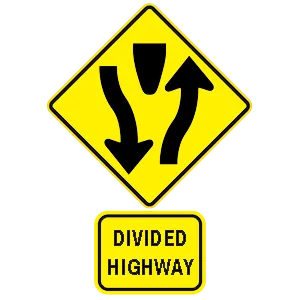
Warning signs are usually diamond-shaped with black markings on a yellow background. They alert drivers to upcoming hazards. This warning sign indicates that drivers are about to encounter a divided highway.
28 . You need to use extra caution when driving near a pedestrian using a white cane because:
When driving near a blind pedestrian who is carrying a white cane or walking with a guide dog, you must slow down, yield the right-of-way, and then proceed with caution. Be prepared to stop your vehicle in order to prevent injury or danger to the pedestrian.
Need Car Insurance? No problem!
Compare the best rates in Florida and find a personalized policy that meets your needs.
1. Are You Currently insured ?
2. Married ?
3. Do you own your Home?
4. Do you have more than 1 car ?
5. Have you or a Family Member Honorably Served in U.S. Military ?
6. Your Name
7. Age
8. Zip code
IMPORTANT REMINDER:Auto Insurance is Mandatory to drive in Florida. Get covered before you hit the road to avoid any fines.
Ranked by best match
